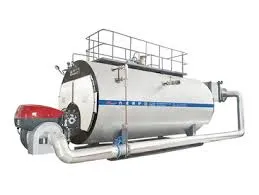- Afrikaans
- Albanian
- Amharic
- Arabic
- Armenian
- Azerbaijani
- Basque
- Belarusian
- Bengali
- Bosnian
- Bulgarian
- Catalan
- Cebuano
- China
- China (Taiwan)
- Corsican
- Croatian
- Czech
- Danish
- Dutch
- English
- Esperanto
- Estonian
- Finnish
- French
- Frisian
- Galician
- Georgian
- German
- Greek
- Gujarati
- Haitian Creole
- hausa
- hawaiian
- Hebrew
- Hindi
- Miao
- Hungarian
- Icelandic
- igbo
- Indonesian
- irish
- Italian
- Japanese
- Javanese
- Kannada
- kazakh
- Khmer
- Rwandese
- Korean
- Kurdish
- Kyrgyz
- Lao
- Latin
- Latvian
- Lithuanian
- Luxembourgish
- Macedonian
- Malgashi
- Malay
- Malayalam
- Maltese
- Maori
- Marathi
- Mongolian
- Myanmar
- Nepali
- Norwegian
- Norwegian
- Occitan
- Pashto
- Persian
- Polish
- Portuguese
- Punjabi
- Romanian
- Russian
- Samoan
- Scottish Gaelic
- Serbian
- Sesotho
- Shona
- Sindhi
- Sinhala
- Slovak
- Slovenian
- Somali
- Spanish
- Sundanese
- Swahili
- Swedish
- Tagalog
- Tajik
- Tamil
- Tatar
- Telugu
- Thai
- Turkish
- Turkmen
- Ukrainian
- Urdu
- Uighur
- Uzbek
- Vietnamese
- Welsh
- Bantu
- Yiddish
- Yoruba
- Zulu
nov. . 12, 2024 02:22 Back to list
ductile casting
The Rise of Ductile Casting Transforming Industries with Superior Strength and Flexibility
Ductile casting, also known as ductile iron casting or spheroidal graphite iron casting, has seen a remarkable increase in popularity across various industries, largely due to its exceptional mechanical properties and versatility. This method of casting produces a material that demonstrates outstanding strength, ductility, and overall performance, making it an ideal choice for a wide range of applications in fields ranging from automotive to heavy machinery.
Understanding Ductile Casting
Ductile cast iron is produced by adding small amounts of magnesium to conventional grey iron before the casting process. This addition alters the form of graphite within the iron, resulting in the formation of spheroidal or nodular graphite instead of the flake-like structure found in grey iron. The presence of these nodules allows for improved tensile strength and elongation properties, rendering the final product far more adaptable to various stresses and conditions.
The process of ductile casting typically involves several stages, including melting the raw materials, adding the alloying elements, and pouring the molten iron into molds. Advanced techniques such as computer-aided design (CAD) and computer-aided manufacturing (CAM) optimize the mold creation process, ensuring precision and efficiency in production. This level of control enhances the overall quality of the final product and supports the customization of components to meet diverse specifications.
Benefits of Ductile Casting
One of the main advantages of ductile cast iron is its exceptional mechanical properties. It can withstand considerable stress and strain, making it suitable for heavy-load applications. Furthermore, its excellent fatigue resistance ensures durability over extended periods of use. This makes ductile iron ideal for components such as gears, crankshafts, and various parts in automotive engines, where performance reliability is critical.
Additionally, ductile cast iron exhibits a high resistance to impact, which is particularly valuable in environments where sudden shock loads may occur. This characteristic is especially beneficial in manufacturing tools and heavy machinery parts that encounter rigorous operational conditions.
ductile casting

Ductile casting also offers superior corrosion resistance compared to other traditional metal forms, thereby reducing maintenance and prolonging the life of the components. This aspect is critical for industries such as waterworks and sewerage where pipes and fittings need to endure harsh environments.
Applications Across Industries
The versatility of ductile cast iron makes it an attractive choice across a myriad of sectors. In the automotive industry, manufacturers utilize ductile iron for critical engine parts, including cylinder heads, suspension components, and exhaust manifolds. These parts not only require high strength but also the ability to absorb vibrations and withstand thermal variations, making ductile iron an ideal material.
In the construction sector, ductile iron pipes are widely employed for water and sewage systems due to their strength and leak-proof characteristics. The longevity and reduced maintenance needs associated with ductile casting contribute significantly to cost-efficiency over the infrastructure's life cycle.
Moreover, the manufacturing of agricultural machinery, wind turbines, and heavy mining equipment increasingly employs ductile cast iron components, as these sectors require materials that can endure rigorous operational demands while delivering consistent performance.
Conclusion
Ductile casting presents significant advantages that are reshaping manufacturing paradigms across numerous industries. As technologies improve and industries evolve, the demand for materials that offer a combination of strength, flexibility, and durability will only increase. The growth of ductile cast iron casting is not merely a trend but a reflection of the ongoing innovation within the manufacturing sector, allowing businesses to produce components that are efficient, reliable, and designed to meet the challenges of tomorrow. As we look to the future, ductile casting is poised to play a pivotal role in the advancement of engineering materials, driving both economic and technological progress in various fields.
-
8mm Thin-Walled Cast Steel Manhole Cover Pallet Bottom Ring | Durable
NewsAug.04,2025
-
Premium Cast Iron Water Main Pipe: Durable, Corrosion-Resistant
NewsAug.03,2025
-
Durable Cast Iron Water Mains | AI-Optimized Systems
NewsAug.02,2025
-
High-Efficiency Propane Boiler for Baseboard Heat | Save Energy
NewsAug.01,2025
-
Premium Source Suppliers for Various Gray Iron Castings
NewsJul.31,2025
-
Durable Cast Iron Water Main Pipes | Long-Lasting
NewsJul.31,2025


